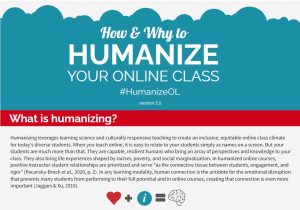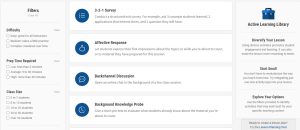Evidence-Based Teaching Resources
Student Engagement
As we have discussed throughout this FLC, one of the most crucial elements of culturally responsive teaching is the formation of relationships. It might be helpful to use the framework of Transactional Distance Theory to think about relationships. While it was developed as a theoretical framework for distance learning (originally correspondence courses, and later online learning), scholars of effective learning practices are increasingly applying this framework to all learning environments, including face-to-face. Transactional Distance Theory posits that there are three key interactions in learning environments:
- student/instructor
- student/student
- student/materials
While there are many different ways to decrease the transactional distance between the student and each of these three elements, below we suggest one way to do so for each.
Click on the links within the headings (the blue part of the titles) below to explore each resource.
Student/Instructor: Humanizing Your Course
Michelle Pacansky-Brock’s work has shown the importance of “humanizing” your course to establish trust in the learning environment. This resource provides a number of specific ways that you can do just that, what the timing should be for humanizing a course, and why it matters.

Student/Student: Active Learning
The Neuroscience of Active Learning
Be sure to explore the examples and links within this article from The OpenLab at City Tech, regarding not only how active learning results in more effective learning retention, but also specific, evidence-based ways to implement active learning techniques.
Interactive Resource: Active Learning Library
Try out this really cool interactive tool that helps you choose just the right active learning approach for your class.

Student/Materials: Transparency in Learning and Teaching (TILT)
The effectiveness of the TILT approach has been researched with over 10,000 students and is, at its foundation, incredibly simple to implement. Here’s the tl;dr (“too long, don’t read”): every assessment should include the following elements.
- Purpose: why are students doing this?
- Task: what exactly are the steps students should take?
- Criteria: how specifically will students be evaluated?
Take your time exploring the site for additional information and detailed examples.
Transparency and Problem-Centered Learning
This video provides an overview of the TILT approach and describes the results of a collaborative study conducted using its principles. Spoiler: the TILT framework not only improves retention, metacognition, and a sense of belonging for all students, but also significantly more so for the student populations we are focusing on for Equity 2030.
Media Attributions
- HumanizingInfographic
- Active Learning Library
